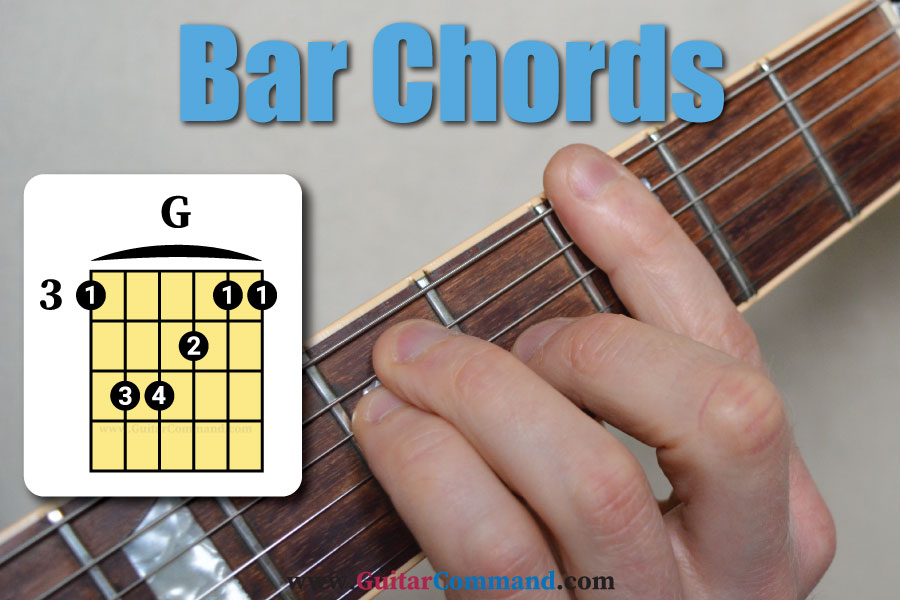Complete guitar bar chords tutorial, with diagrams, examples, photos and a guitar barre chord chart.
Page Index
Click on the links below to go to the section you need:
- What Is A Guitar Bar Chord?
- Example Bar Chord Diagram And Photo
- Movable Chords
- Common Guitar Bar Chords Reference Section
- 6th String Root Note Guitar Bar Chords
- 5th String Root Note Guitar Bar Chords
- Bar Chords Vs Barre Chords
- How To Play Bar Chords On Guitar
- Why Play Guitar Bar Chords?
- Download our awesome Guitar Chords Book and never be stuck for a chord again!
What Are Guitar Bar Chords?
Guitar bar chords are chords in which one finger (usually the index finger) of the fretting hand holds down notes on more than one string at the same time. In doing so, the finger makes a “bar” across the fretboard.
Bar chords are also known as barre chords; the two terms are interchangeable.
Example Bar Chord Diagram And Photo
Below is a G major bar chord shape. This shape is one of the most commonly-used bar chords.
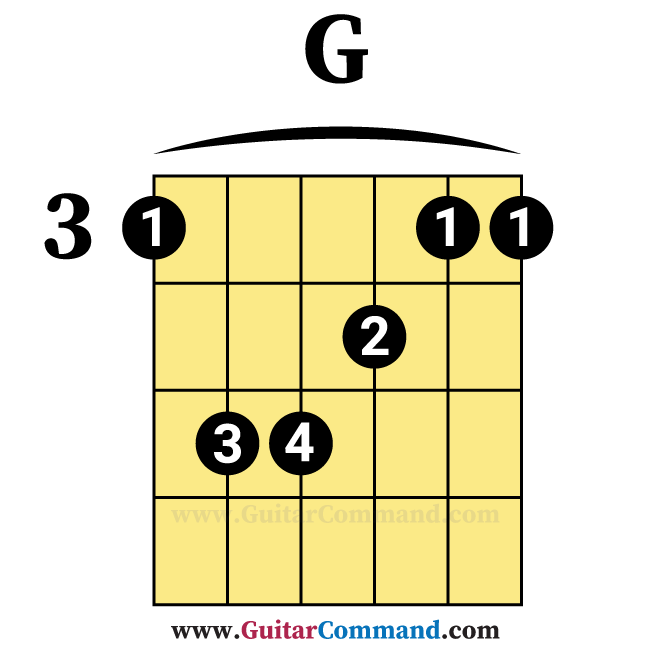
When played at the third fret (as indicated by the number at the side of the chord box), the chord above produces a G chord, as shown below:
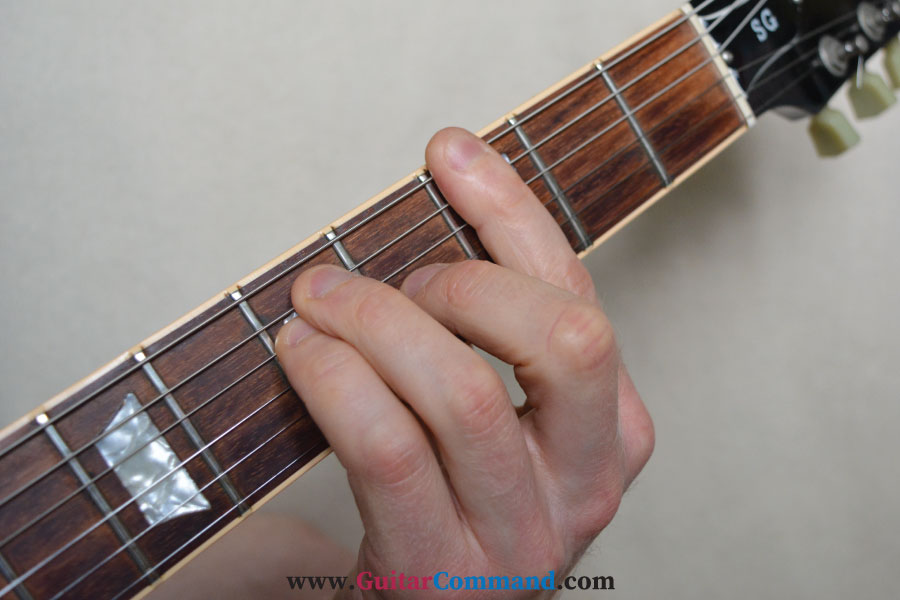
Don't worry if you're having problems playing this chord; most guitarists find playing bar chords "challenging" at first! Further down the page you'll find a guide to playing bar chords. They'll soon become second nature!
Bar Chord Diagram Notes
- The curved line on the chord diagram represents the bar.
- In the chord above, finger 1 (the index finger) stretches across all six strings. In some barre chords, the bar covers fewer strings.
- The index finger makes the bar in the majority of bar chords.
- The number by the side of the chord box indicates the fret at which the bar chord should be played.
You may have noticed that the chord shape above is essentially the same chord shape as that used to play the basic, open position E major chord. The index finger “bar” has simply taken the place of the guitar nut to allow the chord to be played further up the neck, making a G, rather than an E chord.
(The nut is the ridged piece of plastic between the guitar fretboard and headstock. The strings run through the ridges of the nut on their way to the tuning pegs.)
A capo does much the same job as a bar, as it holds down multiple strings, thereby "taking the place" of the guitar nut.
Movable Chords
Bar chords are “movable chords”. This means that the same chord shape can be moved up and down the guitar neck in order to play the same chord with a different root note.
For example, the bar chord shape above can be moved down 2 frets to play an F major chord, or up 2 frets to play an A major chord.
Compare the diagrams below: the fingers don’t move in relation to one another; instead, the whole hand moves to a different position on the fretboard.
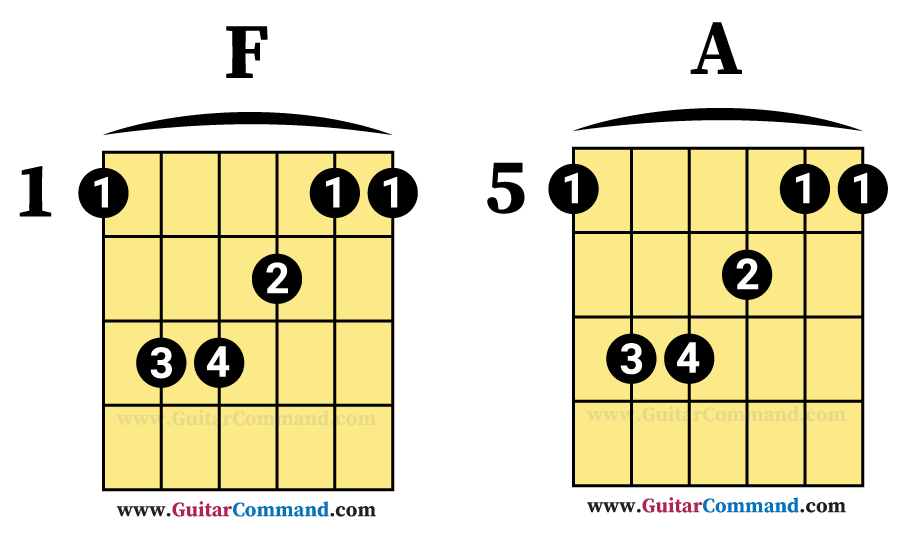

Common Guitar Bar Chords
As we've found, bar chords are movable. This means that any of the chords below can be moved up and down the fretboard to play the same type of chord but with a different root note.
You can use the diagrams on this page: Guitar Strings Notes to find out where to move the chord shapes to in order to play the required chord.
6th String Root Note Guitar Bar Chords
The guitar bar chords in this section all have the root note on the sixth string (the low E string). If you know the notes of the bottom E string then you can play the chords with any root note!
Major Bar Chord Shape

Minor Bar Chord Shape
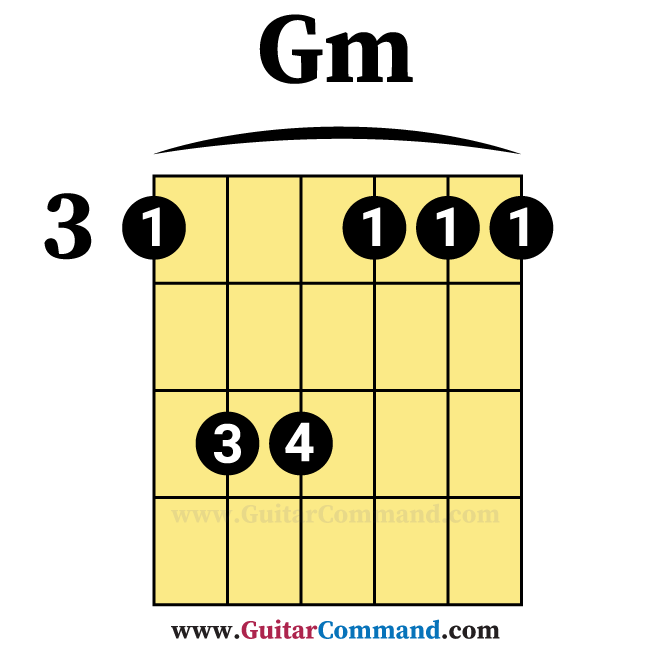
7th Bar Chord Shape

5th String Root Note Guitar Bar Chords
The guitar bar chords in this section all have the root note on the fifth string (the A string). If you know the notes of the A string then you can play the chords with any root note!
Major Bar Chord Shape

Major Bar Chord Shape: Alternative Method
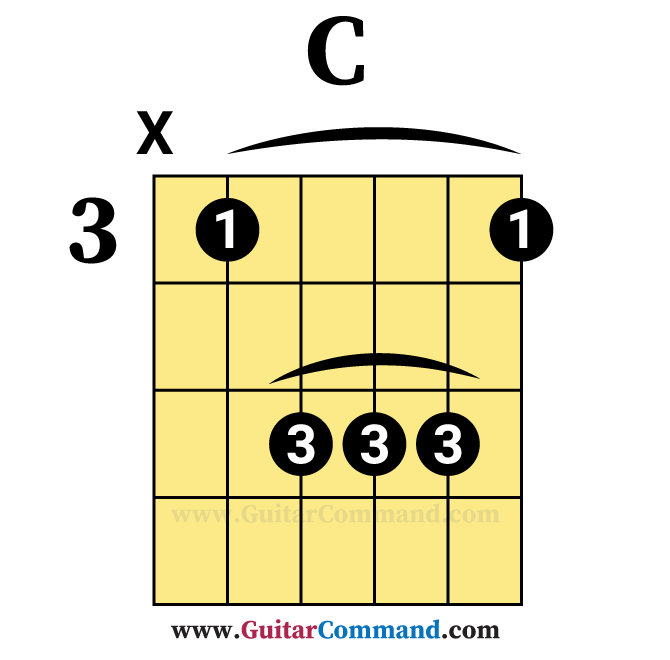
Minor Bar Chord Shape

7th Bar Chord Shape
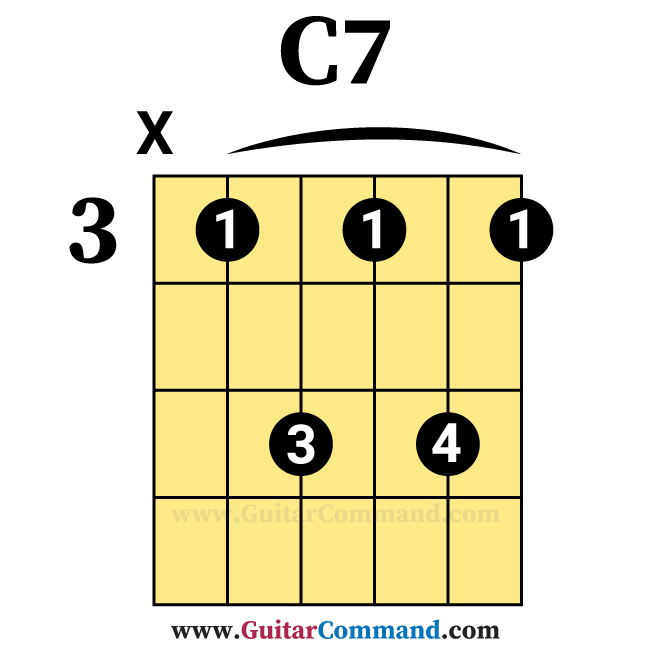
Bar Chords Vs Barre Chords
Bar chords are also known as “barre chords”. The term “barre” comes from the French “barré” (the accent over the e is sometimes used to describe the chords, e.g., barré chord.
How To Play Bar Chords On Guitar
Beginner guitarists often find guitar bar chords difficult at first. Even experienced guitarists have difficulty playing bar chords without the strings buzzing and with all of the notes in the chord ringing freely.
The most important thing to remember is that playing bar chords is more about good technique rather than brute strength.
You don’t need to push down on the fretboard with all your strength.
Aim to position the fretting fingers near the fret wire on the bridge side of the fret, rather than in the middle of the fret. This means that less effort is required to hold down the note without it buzzing.
Experiment with shuffling your fingers around the fret in order to find a position in which the note can ring freely without buzzing.
Play each note in the bar chord separately to check that each note of the chord is sounding clearly and isn’t being dampened by any of the other fingers. If a string is being dampened, make slight adjustments to the fingers involved so that all of the strings can ring.
Playing bar chords can be tough at first. There’s no real way around this other than hard work; regular practice will build up your finger strength, toughen up the skin of the fingers, and allow you to build up the all-important technique that will allow you to eventually play bar chords cleanly and with minimal discomfort.
Why Play Guitar Bar Chords?
Bar chords are difficult to play at first, and because they don’t contain any open strings, both sustain less and sound less bright than open position chords.
But bar chords have many advantages too.
We’ve already covered one of the main benefits of playing bar chords: because bar chords are movable, you only have to learn one chord shape in order to play that type of chord with any root note.
For example, a single minor bar chord shape can be used to play any minor chord, depending on where it is positioned on the fretboard.
Another advantage of bar chords over open strings is that bar chords offer more control. Stopping the chord from ringing requires much less effort; you simply have to raise the fretting fingers slightly off the fretboard to dampen the strings.
You can’t do this with open chords, as the open strings will keep on ringing regardless.
Being able to dampen the strings can be useful for making rhythmic strumming patterns, which can even incorporate the rhythmic sound of the dampened strings being strummed – a vital part of rhythm guitar playing in genres such as metal and funk.
Guitar Bar Chords: Further Information
Diatonic Chords: What They Are & Why You Should Know Them
Printable Guitar Chord PDF eBook

